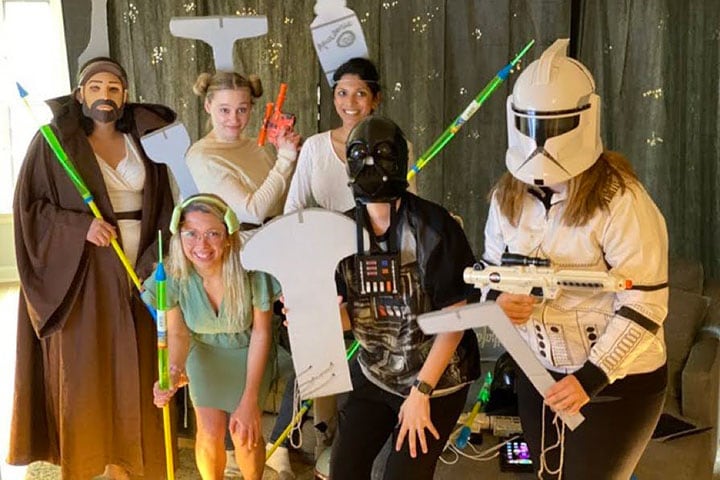Incoming first year residents will attend a full-day Ultrasound Bootcamp to be introduced to the breadth of emergency POCUS. All of the first year residents have their schedules reserved and join our internationally recognized emergency ultrasound faculty in Mayo Clinic's Simulation Center – they have very brief didactic training followed by hands-on guidance and practice of each of the core POCUS studies expected of emergency physicians.
There are two distinct weeks in the PGY-1 year that are reserved for the trainee to focus on focused assessment with sonography in trauma (FAST), cardiac POCUS, abdominal aortic POCUS, and basic procedural POCUS. The PGY-1 trainee also will be completing asynchronous online POCUS learning modules and be performing POCUS for their patients during their clinical shifts and receiving feedback on their scanning performance via QPath™, the emergency department-specific PACS system.
Building off the foundation of emergency POCUS created by the first year of residency, the PGY-2 trainee will continue with online modules throughout their rotations. These are paired with specific rotations such as Orthopedics to augment their rotational experience and their POCUS ability. Throughout the second-year trainee clinical shifts there will be more opportunities for emergency POCUS performance (with feedback on scan performance through QPath™) as well as teaching and supporting first year residents and medical students with their ultrasound journey.
Furthermore, there are two consecutive weeks dedicated to learning emergency POCUS. The focus of this rotation is to reinforce abilities with the FAST, cardiac, and abdominal aortic POCUS and build on the procedural POCUS experience from the first year – also to supplement with biliary POCUS, and lower limb venous POCUS to look for deep vein thrombosis.
The final year of training is about making the application of emergency POCUS more seamless into clinical practice. Trainees are working to become more efficient with setup, performing, and follow through of emergency POCUS while on their clinical shifts as well as incorporate teaching and support for junior trainees in their clinical pods. There is continued scan performance review and feedback for these trainees.
For final year residents who wish to take an elective in POCUS, there is an effort made to create a custom experience tailored to the needs of the trainee. This may involve more advanced ultrasound experience such as in contrast-enhancement, or more subspecialty procedural experience. There is more discussion of advanced cardiac ultrasound, transesophageal echocardiography, etc.
/prod01/channel_2/media/mccms/content-assets/academics/residencies-and-fellowships/emergency-medicine-residency-minnesota/size-512X512_Venkatesh-Bellamkonda-14727676_201607270310.jpg)
/prod01/channel_2/media/mccms/content-assets/academics/residencies-and-fellowships/emergency-medicine-residency-minnesota/curriculum/size-1024X512_Emergency-ultrasound-WF382566_0008.jpg)
.jpg)
/prod01/channel_2/media/mccms/content-assets/academics/residencies-and-fellowships/emergency-medicine-residency-minnesota/size-512X512_Tobias-Kummer,-M.D.-14589273_201807110938.jpg)
/prod01/channel_2/media/mccms/content-assets/academics/residencies-and-fellowships/emergency-medicine-residency-minnesota/size-512X512_Robert-Hyde,-M.D.,-M.A.-14736021_201708230829.jpg)
/prod01/channel_2/media/mccms/content-assets/academics/residencies-and-fellowships/emergency-medicine-residency-minnesota/512X512_faculty-Shiue,-Larissa-T.-(Lacey)_20991100_20220711-(1).jpg)

.jpg)